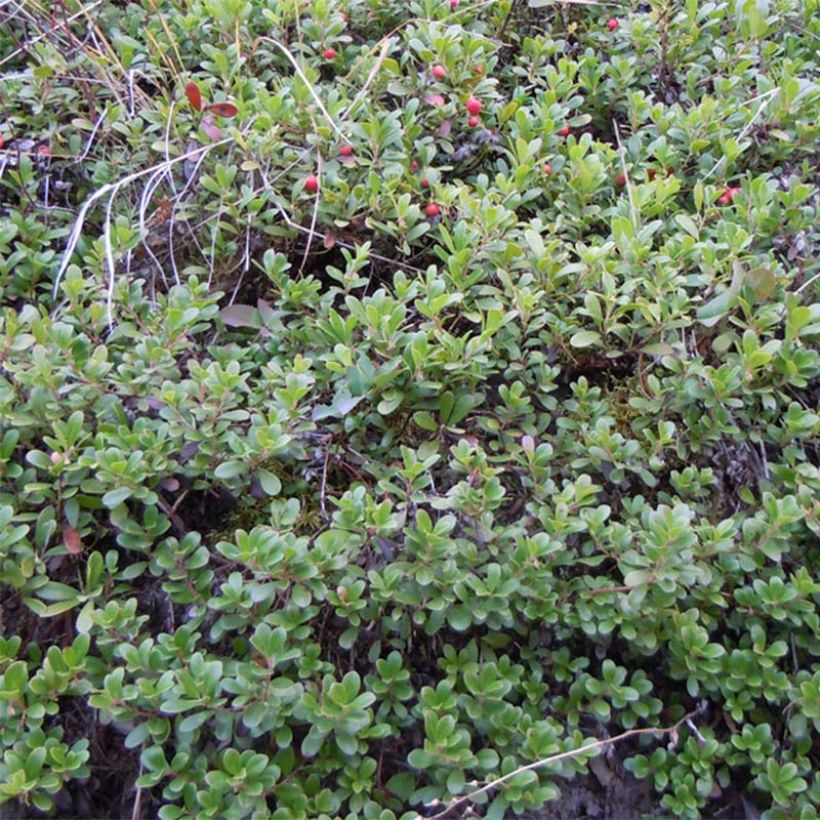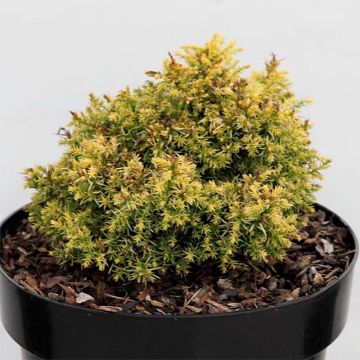

Arctostaphylos uva-ursi - Bearberry


Arctostaphylos uva-ursi - Bearberry
Arctostaphylos uva-ursi - Bearberry
Arctostaphylos uva-ursi
Bearberry, Kinnikinnick
This little shrub that I planted at the top of a rocky slope has taken well. Its first winter, not particularly harsh, it spent under a shrub with a burlap sack on top.
Laurence, 15/09/2021
Special offer!
Receive a €20 voucher for any order over €90 (excluding delivery costs, credit notes, and plastic-free options)!
1- Add your favorite plants to your cart.
2- Once you have reached €90, confirm your order (you can even choose the delivery date!).
3- As soon as your order is shipped, you will receive an email containing your voucher code, valid for 3 months (90 days).
Your voucher is unique and can only be used once, for any order with a minimum value of €20, excluding delivery costs.
Can be combined with other current offers, non-divisible and non-refundable.
Home or relay delivery (depending on size and destination)
Schedule delivery date,
and select date in basket
This plant carries a 24 months recovery warranty
More information
We guarantee the quality of our plants for a full growing cycle, and will replace at our expense any plant that fails to recover under normal climatic and planting conditions.

Would this plant suit my garden?
Set up your Plantfit profile →
Description
Arctostaphylos uva-ursi, more commonly known as Bearberry or medicinal bush, is a low-lying, evergreen shrub that thrives in harsh climates and well-drained, or dry, soils. Covering the ground and rocks with a tangle of stems, bearberry creates beautiful green cascades and stunning crimson carpets that turn bright red in autumn and winter. In late spring, bunches of small white-pink bells bloom, followed by decorative, red, edible berries that are enjoyed by humans as well as many birds and mammals. In the garden, it just needs well-drained soil without limestone. It works well in rock gardens, forming beautiful living tapestries above walls and delighting young and old with its taste.
Bearberry is a plant of the ericaceae family, closely related to blueberries and strawberry trees. It is widespread in lowland areas of countries located at very high latitudes, just below the polar circle. Further south, this species survives at higher altitudes, away from the heat. This undershrub generally grows between rocks, in dry, poor, and acidic soils, or in siliceous-rich alluvial soils.
It is a low-growing and slow-spreading ground cover plant, reaching a height of no more than 25 cm (9.8 in) but able to spread over 1 metre as its prostrate branches with reddish-brown bark easily root upon contact with the ground. The branches bear evergreen foliage, shiny green on top and almost white on the underside. The leaves are simple, thick, leathery, entire, and ovate, 15 to 20 mm (0.6 to 0.8 in) long. They will turn bronze or intense red depending on the intensity of the cold. The flowers are attractive to bees and appear in May-June, in small hanging clusters of white flowers with a pink calyx resembling small bells. After pollination, round berries like grapes form, initially green, turning bright red and becoming highly decorative when ripe. Their texture is somewhat floury, and they have no great flavour, but they are rich in vitamins. They can be eaten raw, used in pastries, or made into jam.
This extremely cold-resistant shrub easily adapts to garden conditions, in any exposure, in non-limestone and well-drained soil. With its dense foliage and neat appearance, bearberry makes an excellent ground cover, valuable for adorning rock gardens, retaining walls, the edge of a well-drained path, or large slopes where it effectively retains soil and slows erosion. It doesn't suffer from pests and diseases and it tolerates pruning well, allowing its growth to be easily controlled. It can be combined with plants that appreciate the same growing conditions: in the sun, lithodora, wall bellflowers, aubrietas, and snow-in-summer, or in the shade, Waldsteinia ternata, periwinkles, geranium macrorrhizum, violets, and many others.
Properties:
Bearberry is also a medicinal plant, used since the Middle Ages for its diuretic and antiseptic properties in urinary tract infections.
Report an error about the product description
Arctostaphylos uva-ursi - Bearberry in pictures






Plant habit
Flowering
Foliage
Botanical data
Arctostaphylos
uva-ursi
Ericaceae
Bearberry, Kinnikinnick
Northern Europe
Other Shrubs A to Z
View all →Planting and care
Arctostaphylos uva-ursi is hardy to -25°C (-13 °F) and should be planted in spring or autumn, in acidic, poor, light, filtering, dry soil, devoid of limestone, although it can adapt to any light, sandy or humus-rich soil, poor in active limestone. It appreciates a sunny position in a cool climate but can tolerate partial shade or even shade in a hot climate. Choose a location sheltered from cold winds. This bush does not tolerate transplanting, especially the older plants, so choose its location carefully and then do not disturb it. Prune to shape when planting, then only trim the branches to tidy the shape. Once well established, after 2 or 3 years, this bush will no longer require watering in summer, even in dry soil. For borders, space the plants about 60 cm (23.6 in) apart. It may be susceptible to attacks from aphids and foliar spot disease.
Planting period
Intended location
Care
-
, onOrder confirmed
Reply from on Promesse de fleurs
Similar products
Haven't found what you were looking for?
Hardiness is the lowest winter temperature a plant can endure without suffering serious damage or even dying. However, hardiness is affected by location (a sheltered area, such as a patio), protection (winter cover) and soil type (hardiness is improved by well-drained soil).

Photo Sharing Terms & Conditions
In order to encourage gardeners to interact and share their experiences, Promesse de fleurs offers various media enabling content to be uploaded onto its Site - in particular via the ‘Photo sharing’ module.
The User agrees to refrain from:
- Posting any content that is illegal, prejudicial, insulting, racist, inciteful to hatred, revisionist, contrary to public decency, that infringes on privacy or on the privacy rights of third parties, in particular the publicity rights of persons and goods, intellectual property rights, or the right to privacy.
- Submitting content on behalf of a third party;
- Impersonate the identity of a third party and/or publish any personal information about a third party;
In general, the User undertakes to refrain from any unethical behaviour.
All Content (in particular text, comments, files, images, photos, videos, creative works, etc.), which may be subject to property or intellectual property rights, image or other private rights, shall remain the property of the User, subject to the limited rights granted by the terms of the licence granted by Promesse de fleurs as stated below. Users are at liberty to publish or not to publish such Content on the Site, notably via the ‘Photo Sharing’ facility, and accept that this Content shall be made public and freely accessible, notably on the Internet.
Users further acknowledge, undertake to have ,and guarantee that they hold all necessary rights and permissions to publish such material on the Site, in particular with regard to the legislation in force pertaining to any privacy, property, intellectual property, image, or contractual rights, or rights of any other nature. By publishing such Content on the Site, Users acknowledge accepting full liability as publishers of the Content within the meaning of the law, and grant Promesse de fleurs, free of charge, an inclusive, worldwide licence for the said Content for the entire duration of its publication, including all reproduction, representation, up/downloading, displaying, performing, transmission, and storage rights.
Users also grant permission for their name to be linked to the Content and accept that this link may not always be made available.
By engaging in posting material, Users consent to their Content becoming automatically accessible on the Internet, in particular on other sites and/or blogs and/or web pages of the Promesse de fleurs site, including in particular social pages and the Promesse de fleurs catalogue.
Users may secure the removal of entrusted content free of charge by issuing a simple request via our contact form.
The flowering period indicated on our website applies to countries and regions located in USDA zone 8 (France, the United Kingdom, Ireland, the Netherlands, etc.)
It will vary according to where you live:
- In zones 9 to 10 (Italy, Spain, Greece, etc.), flowering will occur about 2 to 4 weeks earlier.
- In zones 6 to 7 (Germany, Poland, Slovenia, and lower mountainous regions), flowering will be delayed by 2 to 3 weeks.
- In zone 5 (Central Europe, Scandinavia), blooming will be delayed by 3 to 5 weeks.
In temperate climates, pruning of spring-flowering shrubs (forsythia, spireas, etc.) should be done just after flowering.
Pruning of summer-flowering shrubs (Indian Lilac, Perovskia, etc.) can be done in winter or spring.
In cold regions as well as with frost-sensitive plants, avoid pruning too early when severe frosts may still occur.
The planting period indicated on our website applies to countries and regions located in USDA zone 8 (France, United Kingdom, Ireland, Netherlands).
It will vary according to where you live:
- In Mediterranean zones (Marseille, Madrid, Milan, etc.), autumn and winter are the best planting periods.
- In continental zones (Strasbourg, Munich, Vienna, etc.), delay planting by 2 to 3 weeks in spring and bring it forward by 2 to 4 weeks in autumn.
- In mountainous regions (the Alps, Pyrenees, Carpathians, etc.), it is best to plant in late spring (May-June) or late summer (August-September).
The harvesting period indicated on our website applies to countries and regions in USDA zone 8 (France, England, Ireland, the Netherlands).
In colder areas (Scandinavia, Poland, Austria...) fruit and vegetable harvests are likely to be delayed by 3-4 weeks.
In warmer areas (Italy, Spain, Greece, etc.), harvesting will probably take place earlier, depending on weather conditions.
The sowing periods indicated on our website apply to countries and regions within USDA Zone 8 (France, UK, Ireland, Netherlands).
In colder areas (Scandinavia, Poland, Austria...), delay any outdoor sowing by 3-4 weeks, or sow under glass.
In warmer climes (Italy, Spain, Greece, etc.), bring outdoor sowing forward by a few weeks.


















































